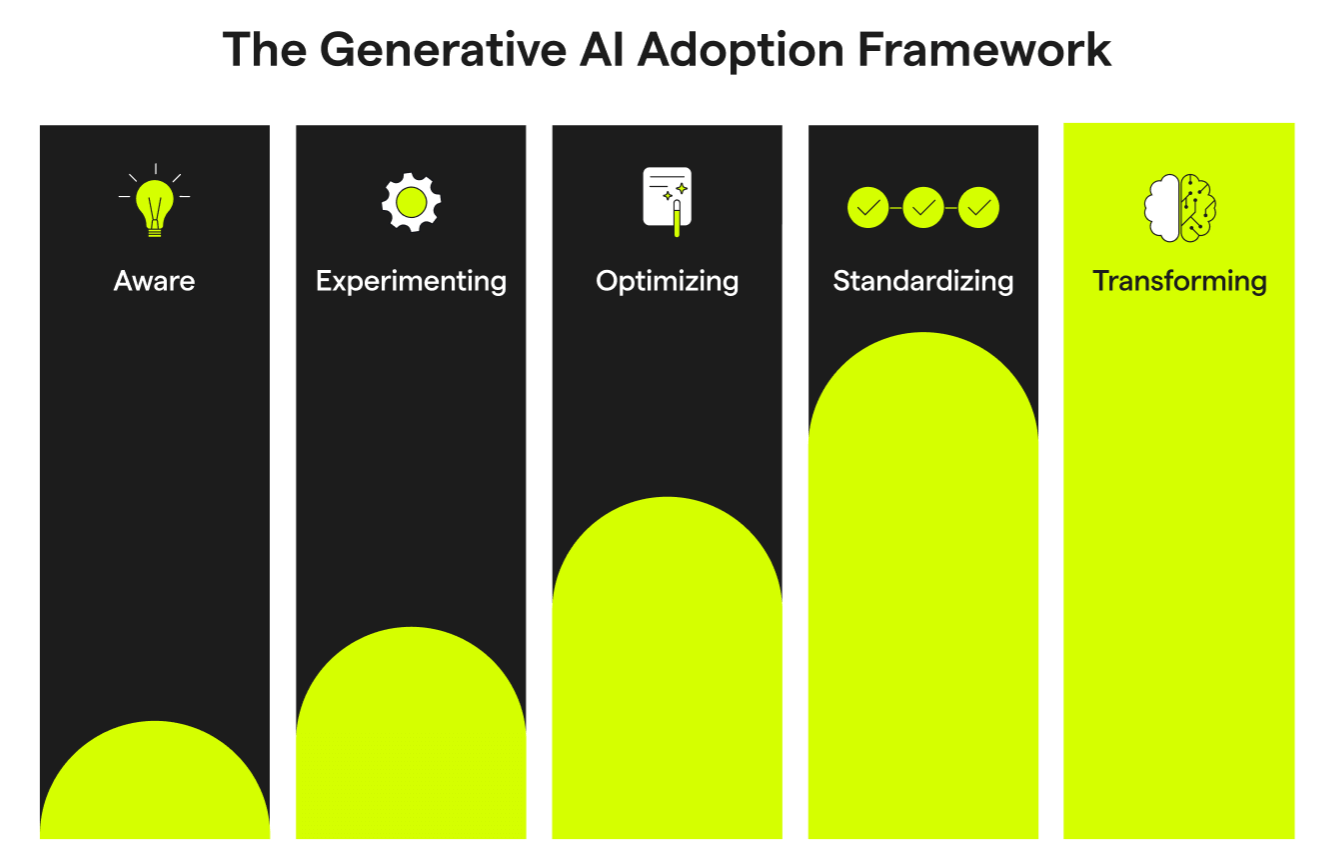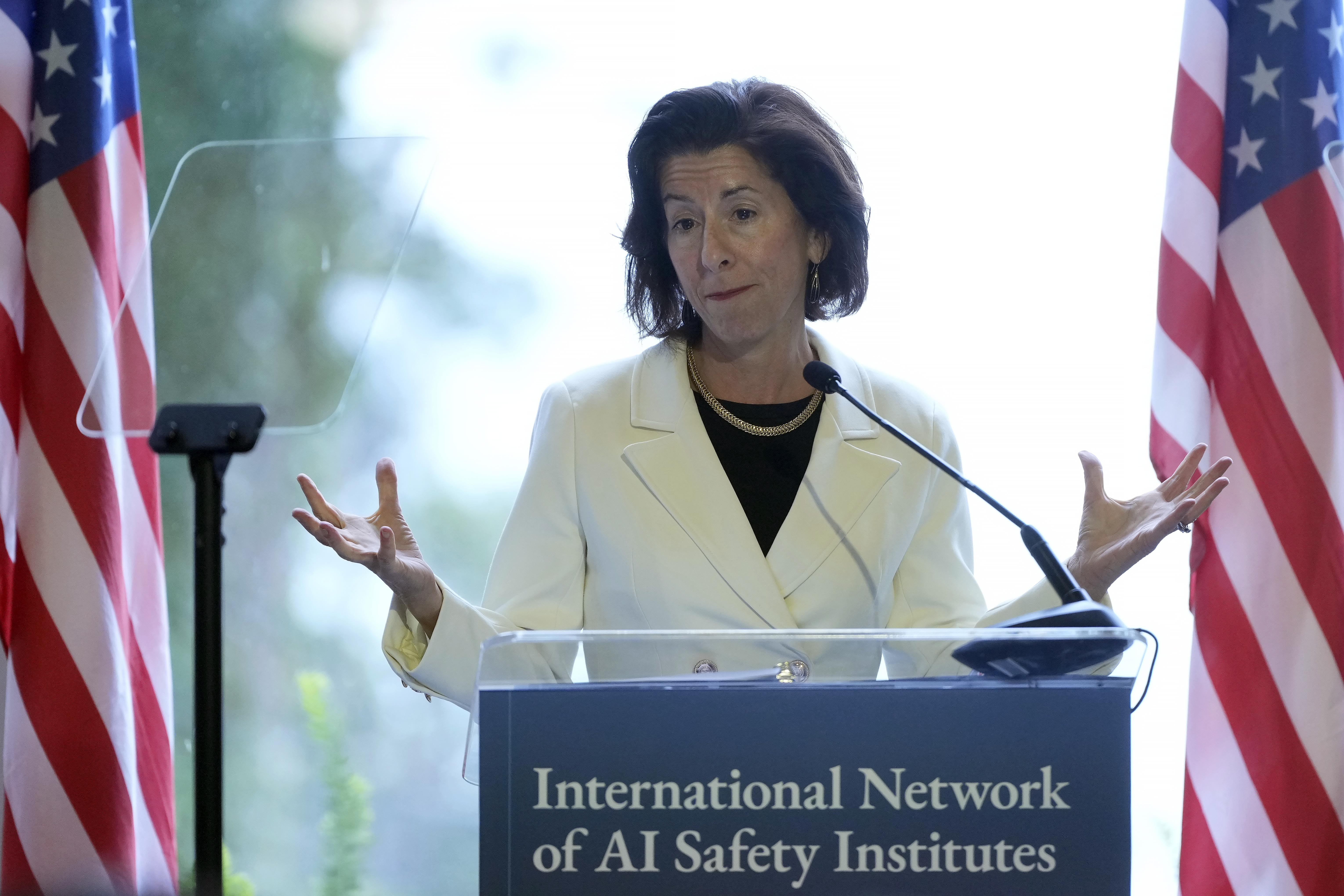Generative AI adoption is moving at an unprecedented pace, outstripping the growth rates of both the internet and personal computers. Since the launch of innovative AI technologies like ChatGPT in November 2022, nearly 40% of Americans have embraced this intelligent tool, transforming both workplace productivity and home tasks. As businesses and individuals increasingly integrate AI in the workplace, the implications for economic productivity and efficiency are profound. The rapidly increasing adoption rate of AI not only reflects its utility but also signals a pivotal moment in technological evolution. As the impact of generative AI continues to unfold, understanding its role in modern society becomes crucial for leveraging AI technology effectively.
The surge in embracing advanced AI tools marks a significant shift in how individuals and organizations approach digital innovation. With applications ranging from content creation to enhancing workflows, this new wave of artificial intelligence is reshaping both professional and domestic environments. The rise in ChatGPT usage illustrates a growing trend of integrating intelligent systems into everyday tasks, prompting businesses to reassess their strategies for the future. As the speed at which society adopts these technological breakthroughs accelerates, understanding the adoption dynamics will ultimately determine the enhancement of productivity and innovation across various sectors. Exploring alternative terms like intelligent automation and smart systems can further elucidate the multifaceted nature of AI’s impact in the modern economy.
The Rising Importance of Generative AI Adoption
In recent years, the adoption rate of generative AI technologies has surpassed that of traditional computing innovations like personal computers and the internet. With nearly 40 percent of Americans now utilizing generative AI tools such as ChatGPT, businesses must recognize that this rapid adoption marks a significant shift in workplace dynamics. Utilizing AI technology can streamline processes, improve productivity, and foster innovation in ways that were previously not possible. As companies navigate the implications of this widespread generative AI adoption, understanding its transformative potential becomes crucial for staying competitive in today’s digital landscape.
The rise of generative AI is not merely a trend; it’s a revolution in how we approach workflows across various sectors. Organizations need to leverage AI technology not just as a novelty, but as an essential part of their operational strategy. As AI begins to integrate into diverse fields, the adoption rate reflects a growing acceptance of these advanced tools, which allow for enhanced data processing, content creation, and decision-making capabilities. Failure to adapt and incorporate generative AI could leave businesses at a disadvantage as their competitors harness its full potential to innovate and excel.
Impact of Generative AI on the Workplace
Generative AI has emerged as a powerful tool that significantly impacts various dimensions of workplace performance. A staggering 28 percent of employed individuals are now using AI tools like ChatGPT to enhance their day-to-day tasks, from drafting documents to conducting research. This data showcases the tangible shift in workplace efficiency driven by generative AI. Workers are increasingly finding themselves supported by AI technologies that comprehend natural language and produce human-like text, which enables them to manage their workloads effectively while leaving room for creativity and strategic thinking.
The integration of generative AI in the workplace also shifts how teams collaborate and communicate. With AI technology providing real-time assistance, employees can share information, draft content, and compile resources faster than ever before. This technological advancement is particularly important in industry settings that require constant adaptation to changing needs and developments. Consequently, the impact of generative AI is not limited to isolated tasks; it reshapes the overall workplace environment by fostering collaboration, enhancing productivity, and empowering employees to push the boundaries of what they can achieve.
Understanding Demographic Disparities in AI Usage
While generative AI adoption has seen significant uptake across the workforce, its use is not evenly distributed among different demographic groups. Men, younger individuals, and those in higher education or in professional sectors dominate the adoption trends, raising questions about the broader implications of generative AI technology. Studies show that younger generations are particularly adept at utilizing new tech, indicating that generational familiarity and comfort with digital tools contribute greatly to AI usage rates. Understanding these disparities is vital for businesses aiming to facilitate equitable access to generative AI capabilities across their workforce.
This demographic lens highlights not just who is adopting the technology, but also who remains on the periphery. Despite higher levels of computer access, generative AI usage varies significantly by occupation, particularly favoring those in STEM and managerial roles. This gap necessitates an intentional effort from organizations to ensure that all employees, regardless of demographics, can harness the benefits of generative AI. Creating training initiatives, providing resources, and fostering a culture of innovation can help bridge these gaps, thus enabling a more comprehensive incorporation of AI in workplaces.
The Future of AI Technologies in Business
As companies reflect on the rapid acceptance of generative AI technologies, it’s essential to consider how this trajectory could shape future business strategies. Historical comparisons to past technological revolutions emphasize the importance of early adoption and integration. Just as the internet laid the groundwork for countless innovations, generative AI is positioned to become a critical tool for businesses looking to optimize operations and enhance consumer experiences. Organizations that act proactively in leveraging these technologies stand to gain substantial competitive advantages.
The road ahead is promising for businesses willing to adopt AI technologies, particularly as generative AI continues to advance. The immediate challenge for organizations is to find effective applications that enhance productivity while also navigating the ethical and practical implications of AI usage. Emphasizing creativity, collaboration, and innovation will be paramount for ongoing success in this AI-driven landscape. The commercial potential of generative AI is enormous; those who can recognize and adapt to this changing environment will lead the way into a new era of business.
Navigating the Ethical Implications of AI Deployment
The swift advancement of generative AI technologies brings with it an assortment of ethical considerations that companies must navigate carefully. As AI steadily integrates into workflows, concerns regarding data privacy, job displacement, and the implications of relying on AI for decision-making processes arise. Companies must strive to maintain transparency about how they implement AI solutions, ensuring that employees and consumers alike are informed and engaged in discussions about ethical AI use. Addressing these concerns proactively can foster trust and collaboration in the workplace.
In addition, businesses must recognize the importance of adhering to responsible AI practices to mitigate potential pitfalls associated with generative AI deployment. Establishing guidelines and frameworks for evaluating AI-generated content can help prevent misinformation and maintain quality control. By placing ethics at the forefront of their AI strategies, organizations can not only safeguard against reputational damage but also lead the way in promoting responsible AI usage throughout their industries.
The Role of Education in Advancing AI Literacy
As generative AI technologies become more prevalent, the need for education in AI literacy cannot be overstated. Schools, universities, and professional training programs must adapt their curricula to incorporate AI concepts, enabling future generations to leverage these tools effectively. Educating individuals about the capabilities and limitations of generative AI will empower them to utilize these tools ethically and responsibly within their professional lives. This foundational knowledge will be instrumental in preparing a workforce ready to thrive in an increasingly AI-driven economy.
Moreover, companies themselves have a vital role to play in fostering AI literacy among employees. By providing resources, training opportunities, and workshops dedicated to understanding generative AI, organizations can cultivate a culture that embraces technological advancement. Continuous education in AI not only enhances employee satisfaction and engagement but also ensures that teams are equipped to harness the full potential of generative AI technologies in their respective domains.
Analyzing the Impact of Generative AI on Employee Productivity
There is a growing body of evidence suggesting that generative AI has a profound impact on employee productivity across various industries. With AI technology streamlining mundane tasks, employees can redirect their focus to more strategic initiatives and creative problem-solving. This shift ultimately results in a more efficient workplace where innovation and collaboration are prioritized. The ability of generative AI to aid in tasks like drafting documents, analyzing data, and generating ideas enhances the overall output of teams, fostering an environment of continuous improvement.
However, it is essential to understand that the productivity gains associated with generative AI depend largely on how organizations implement and encourage the use of these technologies. Encouraging a culture where employees feel supported to experiment with AI tools will likely lead to more significant advancements in productivity. Moreover, by embracing a collaborative approach to integrating AI, businesses can foster a workforce that not only adapts to change but actively seeks out opportunities to innovate and improve operational efficiency.
Exploring AI’s Versatility Across Various Industries
One of the remarkable aspects of generative AI is its adaptability and versatility across various industries. Whether in healthcare, finance, education, or creative arts, AI technology is proving to be a valuable asset by providing innovative solutions tailored to specific sector needs. For example, in the healthcare sector, AI aids in predictive analytics and the evaluation of patient data, leading to improved diagnosis and treatment plans. In finance, generative AI assists in fraud detection and customer service enhancements through automated assistance.
The ongoing exploration of generative AI’s applications will likely catalyze advancements that we have yet to fully comprehend. As demand for innovative AI-driven solutions rises, sectors that incorporate these technologies stand to thrive in terms of efficiency and service delivery. Businesses must remain open to exploring how generative AI can enhance their specific operations while recognizing that each industry’s unique context creates distinct opportunities for technological integration.
Charting the Course for Future AI Technologies
Looking ahead, the path for generative AI technologies appears poised for remarkable growth and influence across various sectors. Business leaders and tech innovators must remain attuned to evolving trends in AI adoption and its implications on operational efficiency and consumer experience. Crafting strategies that embrace generative AI not only enhances business models but also positions organizations as leaders in their respective fields when it comes to innovation.
By being proactive about understanding and implementing generative AI solutions, companies can prepare for the next wave of technological evolution that will redefine industry standards. Future advancements in AI technologies will likely create opportunities for new products, improved customer interactions, and enhanced operational frameworks that respond dynamically to changing demands. The key to capitalizing on this evolution lies in staying informed, adaptable, and willing to embrace the potential of generative AI as a cornerstone of future growth.
Frequently Asked Questions
What is the current adoption rate of generative AI tools like ChatGPT in the workplace?
As of recently, nearly 28 percent of employed individuals in the U.S. reported using generative AI tools like ChatGPT at work. This reflects a strong adoption rate compared to other technologies, indicating a significant shift towards integrating AI technology in the workplace.
How does the adoption rate of generative AI compare to the internet and personal computers?
Generative AI is being adopted at a significantly faster rate than both the internet and personal computers. Nearly 40 percent of Americans have utilized generative AI, while the internet and PCs saw only about 20 percent adoption after two years and three years, respectively.
What factors contribute to the rapid adoption of generative AI technologies in various demographics?
Factors contributing to the rapid adoption of generative AI include the foundational technologies established by prior advancements like PCs and the internet. Additionally, higher adoption rates are observed among younger individuals, men, and those with higher education levels, particularly in STEM and management roles.
In what ways are people using generative AI in their professional tasks?
People are using generative AI for various professional tasks, including drafting emails, conducting research, and accessing documentation. This widespread usage reflects the increased utility of AI technology in enhancing work efficiency and productivity.
What should businesses consider regarding the adoption of generative AI in their operations?
Businesses should recognize that generative AI is poised to be a transformative technology. Executives are encouraged to consider how they can effectively integrate AI technology into their operations, as those who adapt quickly stand to gain competitive advantages in their industries.
What are some common benefits of adopting generative AI in the workplace?
Common benefits of adopting generative AI include improved efficiency, enhanced productivity, and the ability to automate mundane tasks. This allows employees to focus on more strategic initiatives, ultimately driving better business outcomes.
Are there specific demographics that utilize generative AI more frequently?
Yes, usage of generative AI is notably higher among men, younger individuals, and those in white-collar job sectors. Additionally, individuals in STEM fields and managerial roles demonstrate the highest levels of adoption.
What is the expected future impact of generative AI on the economy and job market?
The rapid adoption of generative AI is expected to significantly reshape the economy and job market. As AI technology continues to evolve, businesses that effectively leverage these tools are likely to see enhanced operational capabilities and new opportunities for growth.
| Key Areas | Details |
|---|---|
| Generative AI Adoption Rate | 40% of Americans have used generative AI; faster adoption compared to the internet and PCs. |
| Use at Work and Home | 28% used generative AI at work, 33% used it outside of work. |
| Demographics of Users | Higher usage among younger individuals, men, and white-collar workers. |
| Applications in Work Tasks | Used for tasks like drafting emails, researching, and procedural documentation. |
| Foundational Technology | Generative AI relies on previous technologies (PCs and internet) for rapid adoption. |
| Industry Adoption | Although many companies report using generative AI, formal incorporation remains low. |
| Future Implications | Generative AI is expected to heavily influence economic strategies and practices in the next five to ten years. |
Summary
Generative AI adoption is transforming the landscape of technology use in modern society at an unprecedented rate. With nearly 40% of U.S. adults engaging with generative AI for work and personal tasks, its rapid integration surpasses that of previous technologies such as the internet and personal computers. As businesses begin to recognize the significance of this trend, it is crucial for them to adapt their strategies accordingly in order to capitalize on the emerging capabilities of generative AI. Understanding how and where this technology is utilized can facilitate a more effective incorporation into various sectors, marking a significant organizational shift in the coming years.




